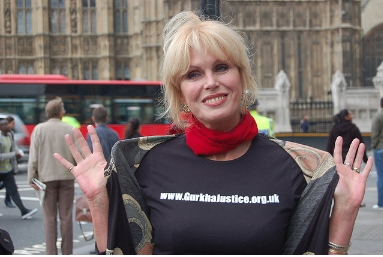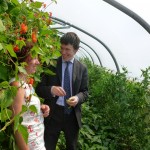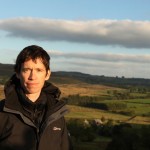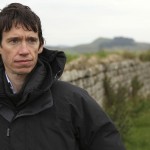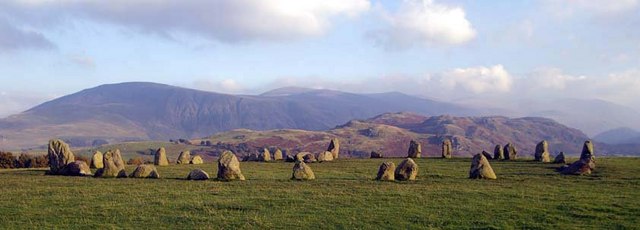Article first published in The Sunday Times, by Gillian Bowditch on 13 July 2014
The Commonwealth Games may yet come to the aid of the BBC Sports Personality of the Year Award and the Ryder Cup is still ahead of us, but on all the evidence to date it clearly is not going to be a spectacular summer of British sport. But could it be a summer of love?
You may not have noticed it but the George Clooney of the House of Commons has been making overtures to you for some months now. Rory Stewart, the Eton- and Oxford-educated former army officer and diplomat who is now MP for Penrith and the Border, wants Scotland to feel the love.
Stewart, who is half Scottish and half English, believes the unionist camp in the referendum debate should stop talking politics or grubby economics and try to woo Scotland instead. He wants unionists in England to “show how much they love Scotland, are committed to it, respect it and want it to stay in the Union”.
A latter-day TE Lawrence, Stewart, whose life story has been optioned by Brad Pitt, has been penning billets doux to the Scots for months now. He is nothing if not romantic and he is immensely frustrated that his compatriots south of the border are keeping quiet about their affection for the Union.
Stewart initially proposed a line of 100,000 people linking hands across the 84-mile border to show their solidarity but, as he ruefully admits, he failed to appreciate the logistics involved. Such as the need for 300 portable loos. Or the requirement for 84 ambulances, one for every mile of Hadrian’s Wall. Not to mention English Heritage, which insisted upon an “events management plan” to protect the scheduled monument from a potential invasion of 200,000 clumsy feet.
Faced with a logistical nightmare, Stewart has instead proposed building a monument to the love that dare not stake its claim.
He is planning to build a giant henge or cairn of stones as a permanent memorial. The project will begin on July 20 on land at the River Sark near Gretna. The idea is that the cairn will grow over the weeks in the lead-up to the referendum and that people who leave stones will write personal messages on them.
He hopes that citizens from all over Britain will come to lay the stones. “It will be a beautiful opportunity to get people together to express their feelings for Scotland but it’s all down to how people feel about the Union,” he said last week.
To date such romanticism as exists in the independence debate has resided firmly with the Yes camp. In the head-verses-heart stakes, the nationalists with their plucky, Braveheart version of separatism, exemplified in the work of the nationalist writer Alan Bissett, have stirred the emotions more effectively than the drier, more cerebral Better Together, led by the deceptively named Alistair Darling.
Those within Yes Scotland may argue that the idea of emotional nationalists pitched against rational unionists is a lazy cliche — and they would be right. The nationalists have attempted to play down the emotional element, preferring to concentrate on the injustices of political control by Westminster rather than any airy idea of freedom, and there was certainly nothing poetic in Scotland’s Future, the case for independence launched by Alex Salmond in November.
Nevertheless, the emotional pull of the nationalists’ argument has been enough to spook the unionists, who have to date been more successful at convincing the electorate that independence would be difficult than they have been at selling the benefits of the Union.
The polls may suggest the referendum has become becalmed, with little progress being made by the Yes camp, but there is still nervousness in the unionist camp that, in the privacy of the ballot box, the emotional appeal of nationalism could overrule a prior decision made on economic grounds — hence their emphasis on the argument that Scots can be unionists and patriots.
Given the unionists’ desire to tick the heart box and the head box, why has there not been more high-level support for Stewart’s approach? There certainly is no lack of passion among the electorate. Meeting up with friends the other night, the talk turned to family members in different camps. Tensions are running high. One friend has gone so far as to change his nationality to be able to vote in order to cancel out the vote of at least one of his children. Another is in a stand-off with her husband on the issue.
According to the latest Survation poll released last week, 21% of Scots say they have fallen out with a family member, friend or colleague over the referendum, with Yes voters at 28% more likely have fallen out with somebody than No voters on 19%, suggesting that nationalists are more involved and have more at stake in the debate.
It may be that Stewart’s cairn is just a bit too kumbaya for those in power. Perhaps they have never experienced the redemptive power of love. But it is most likely to be because Stewart, who has packed more into four decades than any prime minister has in a lifetime, is one of the most dangerous breed of romantic radicals — a Jacobite.
Flamboyant, headstrong, loyal and idealistic, Jacobites tend not to flourish in our dreich climate. It’s difficult to maintain a vision when the view is shrouded in mist. But Stewart’s cairn is more than a pile of stones — a symbolic, and some would argue futile, gesture. He is interested in the gap between government rhetoric and reality, and interested in radical localism.
The more difficult question is not what we do to Afghanistan or Iraq, says Stewart, who walked across the former and was deputy governor of two provinces in the latter, but what do we do with our own countries? Where do they go? It’s the question that all of us need to ask irrespective of the outcome of the referendum.
Some of Stewart’s ideas may be kooky, naive or impractical but the tragedy of the referendum debate has been that an opportunity to examine and shape the future has been lost amid unionist threats of economic disaster and nationalist bribes. Half English, half Scottish, passionate, achingly intelligent with a deep devotion to the Border, Stewart is a refreshing voice in a debate that has trudged rather than soared.
His cause of spreading the love in this tetchy referendum campaign may be as doomed as Culloden and the ’45, but this latter-day Jacobite is an original and refreshing voice in the campaign with a beguiling message. It would be fitting if his cairn became the stones of destiny.
